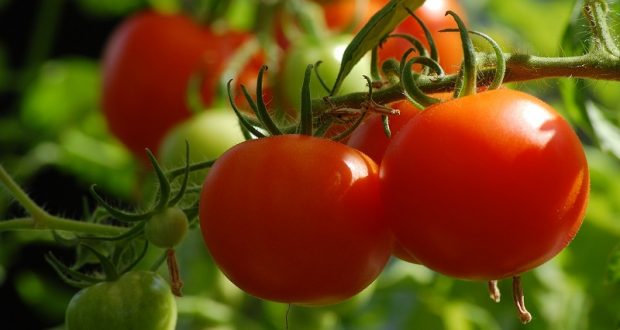By Bob Labozetta —
This is the first of a three-part series about growing tomatoes in the Sierra foothills. Parts two and three on tomato care will follow in the weeks to come.
Tomatoes are adversely affected by temperature extremes. When temperatures stay over 90℉ during the day and the nights remain above 70℉, non-adapted tomato blooms often fail to pollinate, drop off, and/or fail to set fruit. Timing and varietal selection is the key to growing tomatoes in our hot climate.
Choose varieties adapted for hot, dry climates. Short-to-midseason varieties will generally flower, set fruit, and mature before the extremely hot weather hits. Look for 60-70 day maturity varieties, though in some areas of the county gardeners have success with 80-day maturity varieties.
Seeds saved from open-pollinated and heirloom plant fruits will produce plants that will be true-to-type. Over time they will adapt to local growing conditions of climate and soil. If you plan to collect seeds, make sure varieties are not cross-pollinated between species. Seeds produced from hybrid plants will not result in true-to-type offspring.
Specific diseases endemic to our area should also be taken into consideration. Verticillium wilt and Fusarium wilt are common soil-borne diseases that adversely affect tomato plants. Hybrid plants resistant to these diseases may be preferable. Look for the codes V and F attached to the variety name.
Varieties tested by UC researchers and UC Master Gardener groups in similar climates include:
- Cherry Types — Cherry Grande Hybrid, Green Grape, Juliet Hybrid, Large Red Cherry, Sungold, Super Sweet 100 Hybrid, Sweet Chelsea Hybrid, Yellow Pear
- Container Types — Better Bush Hybrid, Patio Hybrid, Small Fry, Toy Boy
- Standard Types — Ace Hybrid, Arkansas Traveler, Ball’s Beefsteak Hybrid, Beefmaster Hybrid, Big Beef, Big Pick, Big Set, Bloody Butcher, Brandywine OTV, Celebrity Hybrid, Champion Hybrid, Cherokee Chocolate, Cherokee Purple, Early Bush 76, Early Girl Hybrid, Early Pick Hybrid, Floramerica Hybrid, Gregori’s Altai, Jackpot Hybrid, Jet Star Hybrid, Jetsetter, Matina, Park’s Whopper CR Improved Hybrid, Pruden’s Purple, Royal Flush, Shady Lady, Virginia Sweets
Some of these tomato varieties will be available as seedlings at the UC Master Gardener Spring Plant and Garden Art sale on Saturday Apr. 27 at the Mariposa County Fairgrounds.
Plant seeds indoors as needed to start seeds 6-8 weeks before the last spring frost — your microclimate can influence the dates, so make adjustments. Plant seeds ¼” deep in a clean, light soil mix and kept evenly moist. Once sprouted, seedlings need 6-8 hours per day of bright light and temperatures of 65-75°.
Bob Labozetta is a U.C. Master Gardener, Mariposa
Visit our UCMG website
Follow us on Facebook
Listen to local interviews on KRYZ 98.5 FM
The U.C. Master Gardener Helpline and Helpdesk are staffed Thursdays from 2 – 5 p.m. Please contact the helpline, or leave a message by phone at: (209) 966-7078. By email (send photos and questions for researched answers) to: mgmariposa@ucdavis.edu
Master Gardener Office Location:
UC Cooperative Extension Office, 5009 Fairgrounds Road, Mariposa, CA 95338
Phone: (209) 966-2417
Email: mgmariposa@ucdavis.edu
Website: http://cemariposa.ucanr.edu/Master Gardener/




